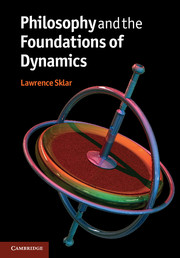Book contents
- Frontmatter
- Contents
- Chapter 1 Introduction
- Chapter 2 The pre-history of classical dynamics
- Chapter 3 The astronomical revolution
- Chapter 4 Precursors to Newtonian dynamics
- Chapter 5 The Newtonian synthesis
- Chapter 6 Philosophical aspects of the Newtonian synthesis
- Chapter 7 The history of statics
- Chapter 8 The development of dynamics after Newton
- Chapter 9 The “Newtonian” approach after Newton
- Chapter 10 From virtual work to Lagrange's equation
- Chapter 11 Extremal principles
- Chapter 12 Some philosophical reflections on explanation and theory
- Chapter 13 Conservation principles
- Chapter 14 Hamilton's equations
- Chapter 15 Canonical transformations, optical analogies and algebraic structures
- Chapter 16 The search for new foundations
- Chapter 17 New directions in the applications of dynamics
- Chapter 18 Spacetime formulations of Newtonian dynamics
- Chapter 19 Formalization: mass and force
- Chapter 20 Relationist dynamics
- Chapter 21 Modes of explanation
- Chapter 22 Retrospective and conclusions
- References
- Index
Chapter 8 - The development of dynamics after Newton
Published online by Cambridge University Press: 05 December 2012
- Frontmatter
- Contents
- Chapter 1 Introduction
- Chapter 2 The pre-history of classical dynamics
- Chapter 3 The astronomical revolution
- Chapter 4 Precursors to Newtonian dynamics
- Chapter 5 The Newtonian synthesis
- Chapter 6 Philosophical aspects of the Newtonian synthesis
- Chapter 7 The history of statics
- Chapter 8 The development of dynamics after Newton
- Chapter 9 The “Newtonian” approach after Newton
- Chapter 10 From virtual work to Lagrange's equation
- Chapter 11 Extremal principles
- Chapter 12 Some philosophical reflections on explanation and theory
- Chapter 13 Conservation principles
- Chapter 14 Hamilton's equations
- Chapter 15 Canonical transformations, optical analogies and algebraic structures
- Chapter 16 The search for new foundations
- Chapter 17 New directions in the applications of dynamics
- Chapter 18 Spacetime formulations of Newtonian dynamics
- Chapter 19 Formalization: mass and force
- Chapter 20 Relationist dynamics
- Chapter 21 Modes of explanation
- Chapter 22 Retrospective and conclusions
- References
- Index
Summary
From special problems and ad-hoc methods to general theory
Our outline of the development of mechanics has proceeded as if we could tell a story with a single line of development. But our account up to now has been, as we shall see, somewhat misleading. Even prior to the great Newtonian synthesis, other approaches to the solution of the problems of dynamics were simultaneously being explored. Most of these approaches remained fragmentary and partial until the eighteenth century. For that reason we have neglected them, reserving discussion of them until the more extended discussion of how those programs became solidified, generalized and systematized in the later history of dynamics.
At this point, however, it becomes impossible to deal with matters in a strictly chronological manner. In the years following the publication of Newton's Principia dynamics followed a number of distinct, although deeply related, patterns of development. It will be essential to deal with each of these in turn, forcing us to go over the same temporal period from several perspectives. This chapter is preliminary to those that follow. In it I will try to lay out something of the problem situation facing the great developers of mechanics and outline the basic structure of the multiple approaches suggested to deal with that array of problems. We may then proceed to explore the several approaches in detail one at a time.
- Type
- Chapter
- Information
- Philosophy and the Foundations of Dynamics , pp. 80 - 88Publisher: Cambridge University PressPrint publication year: 2012



